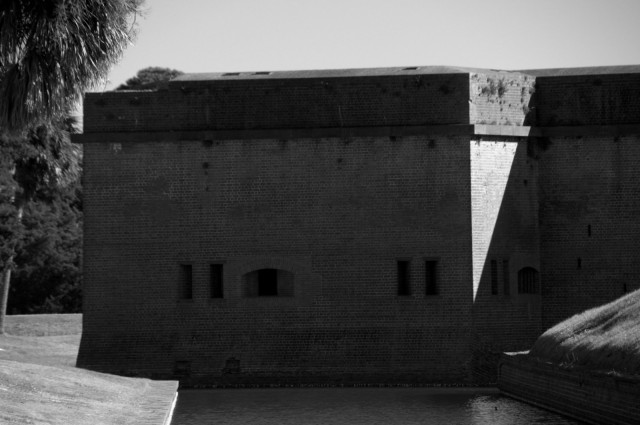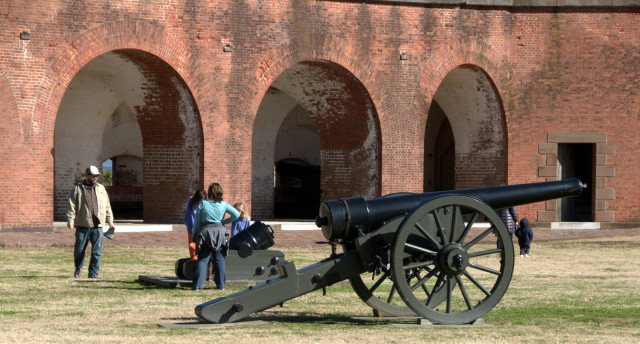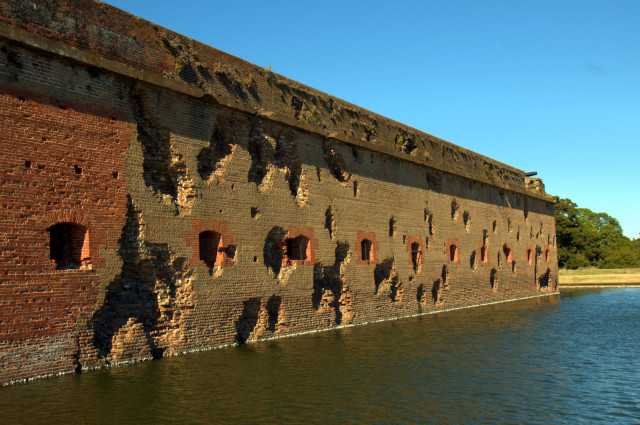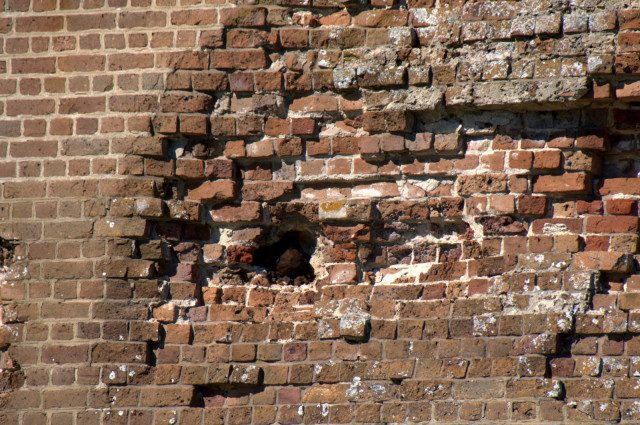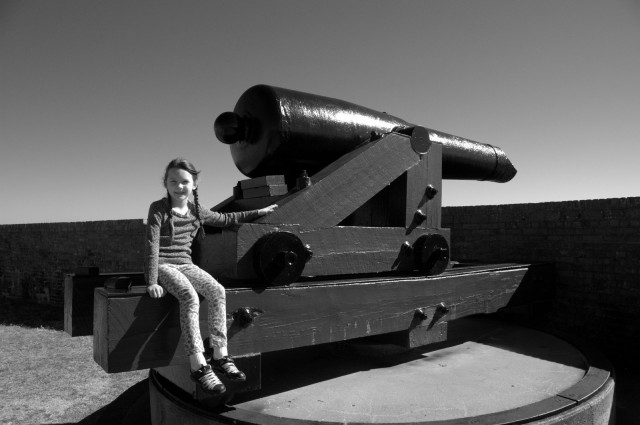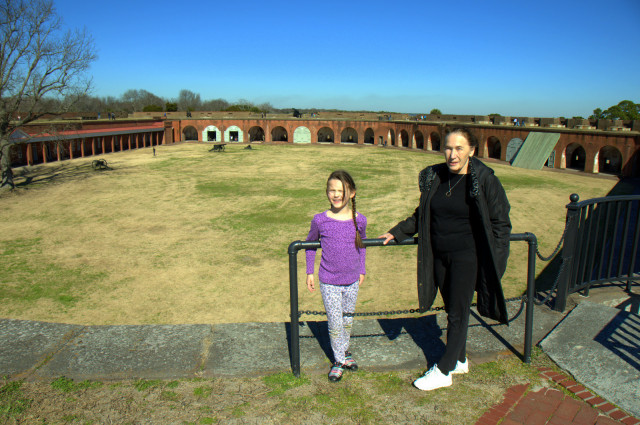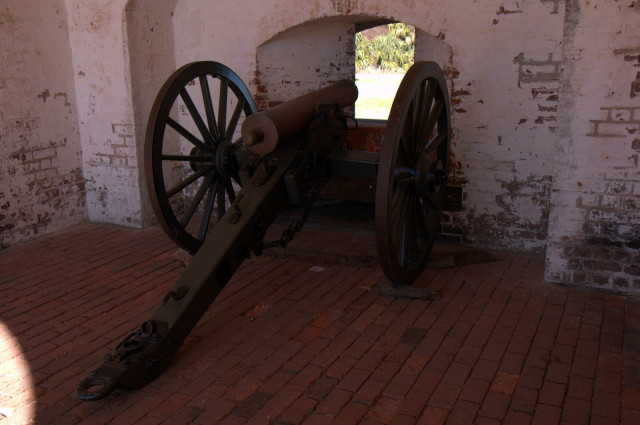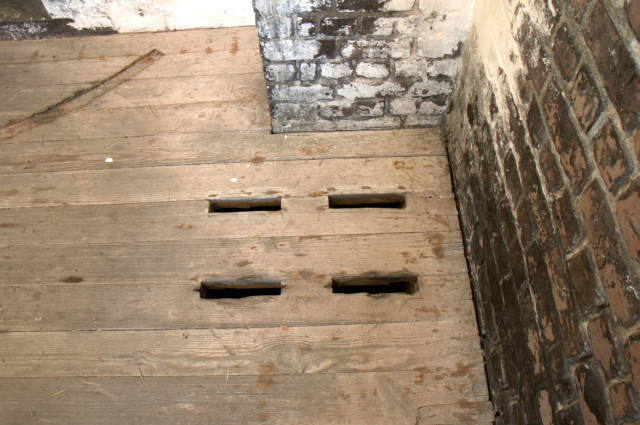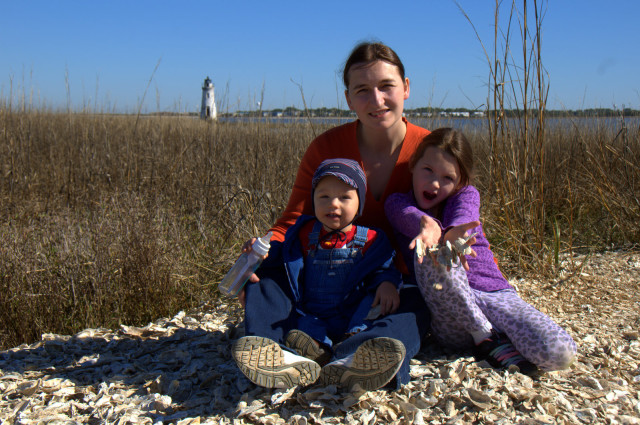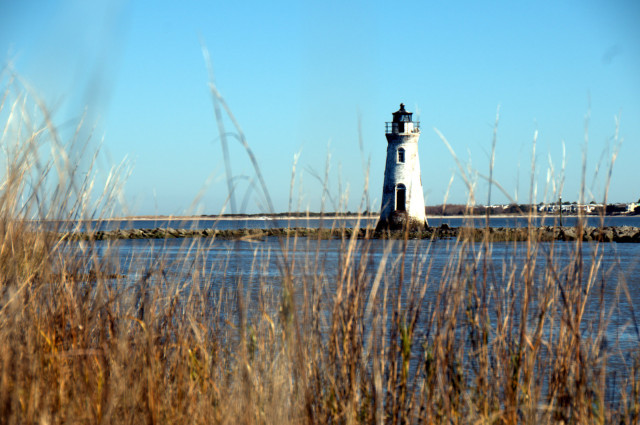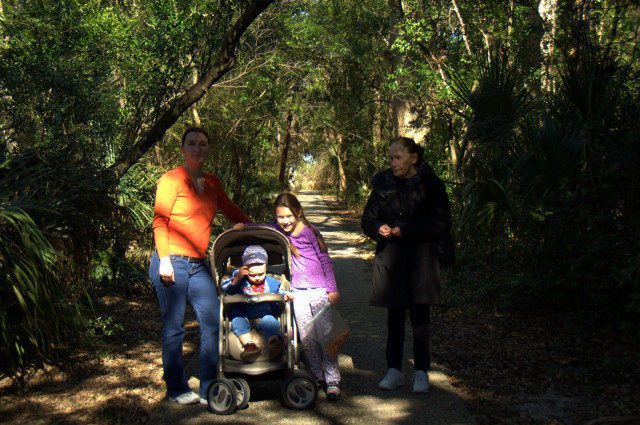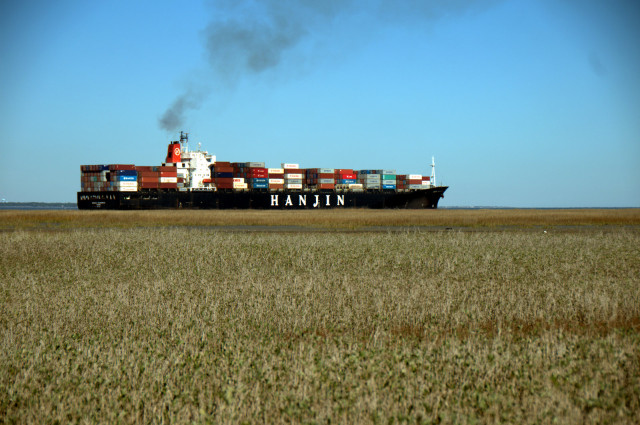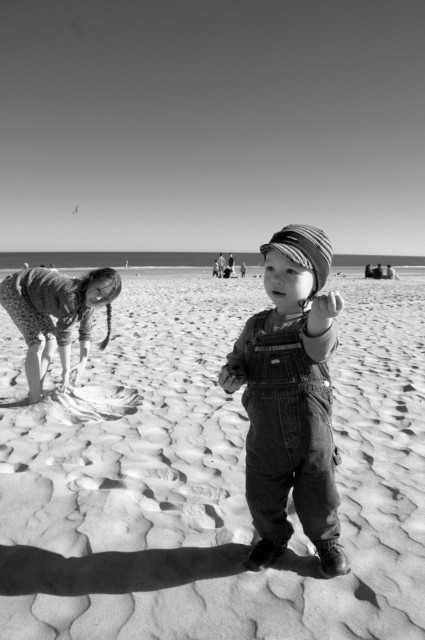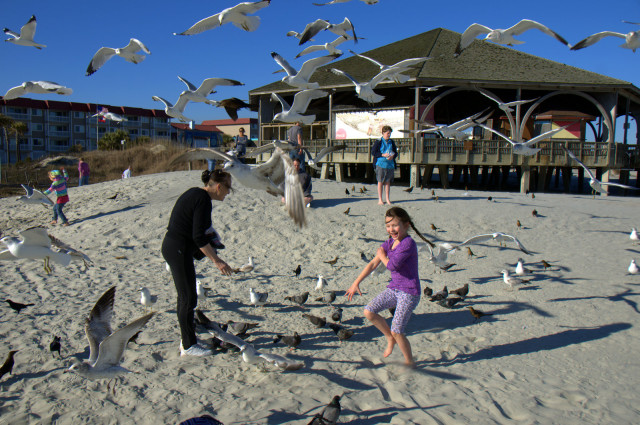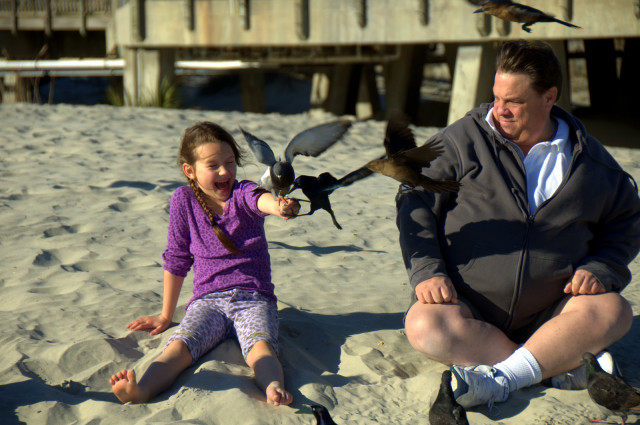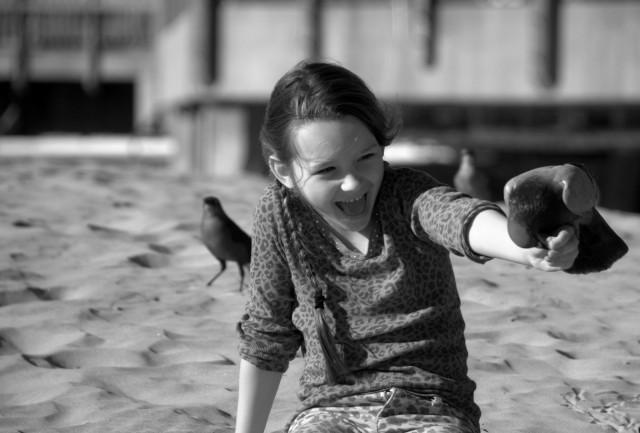When you’re with two full-blooded Poles and two half-blooded Poles and you’re near a fort named after a Pole, there’s only one thing to do: visit said fort.
Named for the Polish hero of the American Revolution, Kazimierz Michał Wacław Wiktor Pułaski, the fort named for him represented a turning point in the history of fortifications: it was the first real bombardment of a fort with rifled cannon fire, and compared to the traditional smooth-bore cannon, the new rifled cannon and bullet-shaped shot proved highly effective. The outer wall was breached with cannon fire from positions over a mile away, and the damaged area is still visible due to the different shade of bricks Union soldiers used in repairing the damage.
And still shells remain lodged in the wall.
Of course, none of this was of any interest to either the Boy or the Girl. They were happy just to run about the parade ground, climb on cannons, and investigate large mysterious openings in the fortifications.
We took a walk about the fort, heading out to the Cockspur Island Lighthouse, which has not been in use for over a hundred years — a little bit of history sitting on an oyster- and mussel-shell bed.
Along the way, we saw why: with the river dredged for such huge container ships, a small lighthouse would be a joke today, and as the dredging began before the turn of the century, the lighthouses’ useful days were certainly finite.
Still, none of this was of any interest to the kids. What was of interest, and what we regretted putting off until the very end, was the beach. Cold, windy, yet still irresistible.
